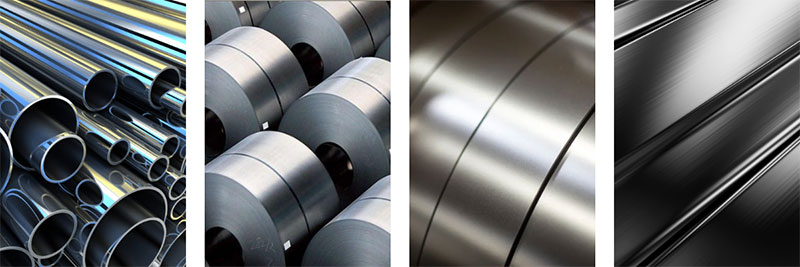Stainless steel is a highly durable and versatile family of iron-based alloys, known for their corrosion resistance, strength, and a wide range of mechanical properties. These characteristics result from the addition of chromium (at least 10.5%) and other alloying elements such as nickel, molybdenum, titanium, and manganese, which enhance its properties and usability in various applications. Here's a breakdown of the key properties of stainless steel:

1. Corrosion Resistance
The most notable property of stainless steel is its corrosion resistance, which is due to the formation of a chromium oxide film on the metal's surface. This layer protects the steel underneath from oxidation (rust) and corrosion. The presence of other elements like nickel and molybdenum can further enhance this property, especially in acidic or chloride-bearing environments.
2. Strength
Stainless steel has a high strength-to-weight ratio, which can be further increased by cold working. Some grades can also be heat treated to achieve even greater strength, making it a popular choice for construction materials, automotive parts, and various tools.
3. Heat Resistance
Certain grades of stainless steel can withstand high temperatures, making them suitable for applications ranging from water heaters and boilers to automotive exhaust systems. The resistance to scaling and retaining strength at high temperatures are key features for these applications.
4. Cryogenic Resistance
Unlike many materials, stainless steel also performs well at very low temperatures, maintaining its ductility and toughness. This makes it suitable for use in cryogenic applications, such as in the storage and transportation of liquefied gases.
5. Hygiene and Cleanliness
The easy-to-clean nature of stainless steel, coupled with its corrosion resistance, makes it the material of choice in sanitary applications, including kitchen appliances, food processing equipment, and medical instruments.
6. Aesthetic Appeal
Stainless steel can be finished in various ways, including a mirror-like shine, matte, brushed, or even a rough surface. Its aesthetic appeal and ability to maintain a clean appearance are why it's popular in architecture, jewelry, and decorative applications.
7. Longevity and Recyclability
Its durability means stainless steel products have a long service life, and when they do reach the end of their use, stainless steel is 100% recyclable, making it an environmentally friendly choice.
8. Magnetic Properties
While most stainless steel grades are non-magnetic, some grades (especially those with high iron content or those from the martensitic and ferritic families) can be magnetic. This property is important in applications where magnetic responsiveness is required or must be avoided.
Types of Stainless Steel
The properties of stainless steel can vary significantly between grades, which are generally categorized into four main families: austenitic, ferritic, martensitic, and duplex. Each offers a different balance of strength, corrosion resistance, magnetic properties, and workability, making it important to choose the right grade for a specific application.
In summary, stainless steel's diverse properties stem from its complex composition and structure, allowing it to be customized to meet the demands of nearly any application, from kitchen utensils to architectural structures, medical devices, and beyond.
